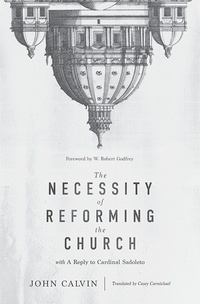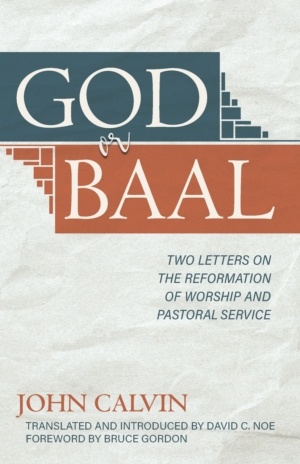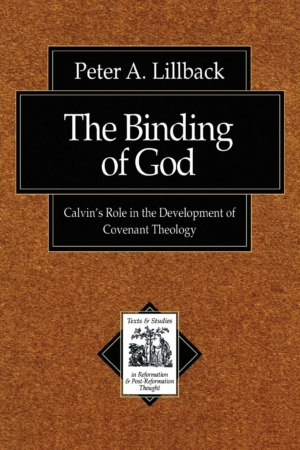You can see, reader, that the man is pulled both this way and that. He wants to appear to be opening a battle against the whole party of the Lutherans, not against any individual member of it. But he cannot attack us . . . Continue reading →
John Calvin
Calvin: The Rule Of Worship Necessitated The Reformation
Now, even at this very time, when we are seeking and searching to find out the misdeeds on account of which God punishes us, and in what we have offended, you allege against us, that we have changed the divine service, and . . . Continue reading →
Video: Who Are The Reformers? John Calvin
Calvin Birthday 2016: Resources For Understanding Calvin
John Calvin was born on this date, 10 July 1509. He died in 1564. He was author of many volumes (including a massive Bible commentary, hundreds of personal letters, and public treatises), most famous of which is his Institutes of the Christian . . . Continue reading →
New In Print: Calvin—Subtle Sacramentarian Or Loyal Son? John Calvin’s Relationship To Martin Luther
In October of 1545, Heinrich von Wolfenbüttel (1489–1568), the Romanist Duke of Braunschweig-Lüneberg-Wolfenbüttel, in the process of a attempting to recover lands taken from him by the Protestant Schmalkald League (in 1542), was taken captive along with his sons. The Lutheran territories . . . Continue reading →
Calvin: We Need To Distinguish Between The Internal And The External Relation To The Covenant Of Grace
For when Scripture speaks of the sons of God, sometimes it has respect to eternal election, which extends only to the lawful heirs; sometimes to external vocation, according to which many wolves are within the fold; and though, in fact, they are . . . Continue reading →
More From Calvin On The Unity Of The Covenant Of Grace
Both can be explained in one word. The covenant made with all the patriarchs is so much like ours in substance and reality that the two are actually one and the same. Yet they differ in the mode of dispensation. But because . . . Continue reading →
Office Hours With Sujin Pak On Calvin’s Hermeneutics And More
Few Bible interpreters in the history of the church have been as prolific and influential as John Calvin (1509–64). Love or hate him, one cannot ignore him. He wrote commentaries upon much of Scripture. As a humanist, he was a careful, sensitive, . . . Continue reading →
A New Calvin Title In English: God Or Baal—Two Letters On The Reformation Of Worship And Pastoral Service
The French “Nicodemites” have long been an interest on the HB. I first wrote about them here in 2009, from which I borrow here to give some background by which to understand the value of a first-ever English translation of two early . . . Continue reading →
Meet Calvin’s Wife: Idelette
Idelette was a young widow with two young children. Her former husband, Jean Stordeur, a cabinet maker from Liège (one of “those cities of the Netherlands in which the awakening had been most remarkable,” J.H. Merle D’Aubigne writes), contracted the plague in . . . Continue reading →
Your Image Of Calvin Is Probably Wrong
The enduring image of Calvin as an unyielding, moralistic and stone-faced tyrant who rejected all the pleasures of life has been his opponents’ greatest victory. The iconography of the Frenchman has hardly helped matters, above all, the Reformation monument in Geneva, which . . . Continue reading →
With The Guilt, Grace, Gratitude Podcast On The Development Of Reformed Covenant Theology In The Reformation
Contrary to what some Dispensational writers have claimed the Christian church, in the post-apostolic period, has always taught covenant theology. The Epistle of Barnabas (c. AD 120) wrote a fairly mature covenantal explanation of the history of redemption, the unity of the . . . Continue reading →
The Canons Of Dork #3 For September 17, 2022
NOTE At the risk of spoiling things, a bit of explanation. Thomas Hobbes (1588–1679) was an English classicist, scientist, and political philosopher. He was a contemporary of many of the early Reformed orthodox writers and he capitalized on and corrupted the Reformed . . . Continue reading →
Calvin On Justification Without The Aid Of Love Or Works
John Calvinsists on the importance of adhering to the exclusive particle. Continue reading →
Heidelminicast: John Calvin Versus The Anabaptists
John Calvin refutes the Anabaptists from Genesis 9. Continue reading →
Review: The Binding of God: Calvin’s Role in the Development of Covenant Theology by Peter A. Lillback
Whether Calvin was a covenant theologian has been a matter of considerable confusion and controversy in modern Calvin studies. The answer to this question has usually been determined by whether one considers the rise of covenant theology a positive or negative development, . . . Continue reading →
Calvin Versus The Anarchist Anabaptists
Today, also, those crackpots, the Anabaptists, who cause so much trouble in the world, who denounce governments, magistrates, the unity of the church, never tire of repeating this phrase, “Blessed are those who suffer persecution.” Yes, but do they suffer on account . . . Continue reading →
Calvin’s Prayer After The Sermon
Almighty God and heavenly Father, You have promised to hear and answer our requests which we make to you in the name of Your beloved Son, Jesus Christ our Lord. We are further taught by Him and His apostles to gather together . . . Continue reading →
Calvin: Christ’s Present Reign Is Hidden Under The Cross
The appearance of Christ and his kingdom mean the same thing; for although he now reigns in heaven and earth, yet hitherto his reign is not clearly manifested, but, on the contrary, is obscurely hidden under the cross, and is violently assailed . . . Continue reading →








